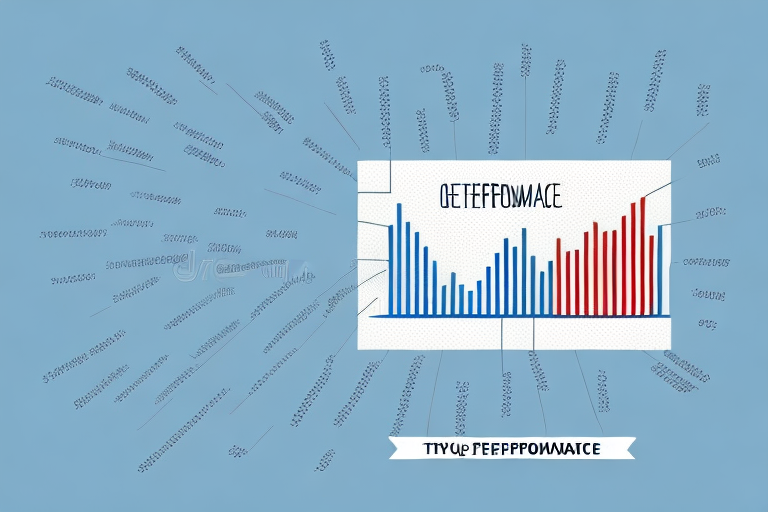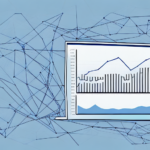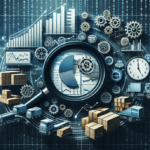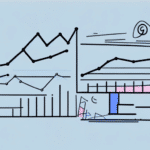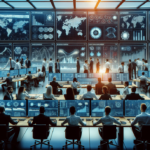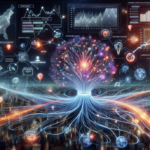How the Economy Has Tracked the US in Recent Years
In recent years, the US economy has undergone significant changes, influenced by various factors such as politics, technology, globalization, and pandemics. The dynamics of the economy and its interrelation with other markets around the world have been critical topics of interest, with experts analyzing and forecasting current and future trends. Let's explore the details of how the US economy has tracked in recent years.
Exploring the Relationship Between the US Economy and the Global Market
The United States is a major player in the global market, and its economy affects other economies worldwide. Conversely, the global market often impacts the US economy. In recent years, trade tensions between the US and China have been a significant factor, leading to the imposition of tariffs on various goods and services.
Trade Wars and Tariffs
The trade war between the US and China resulted in tariffs on billions of dollars' worth of goods, disrupting supply chains and increasing costs for consumers and businesses. According to the U.S. International Trade Commission, these tariffs have had mixed effects on different sectors.
Foreign Investment Trends
The US economy has seen a surge in foreign investments, particularly in technology, healthcare, and finance sectors. In 2022, foreign direct investment in the US reached approximately $290 billion, contributing to job creation and economic growth. Bureau of Economic Analysis.
The Impact of the US Dollar Valuation
The US dollar's status as the world's reserve currency means its valuation significantly affects global trade and investment. A strong dollar can make US exports more expensive, reducing competitiveness, while a weak dollar can increase the cost of imports, potentially leading to inflation. The Federal Reserve monitors the dollar's value to maintain economic stability.
Global Events Affecting the US Economy
Global events such as natural disasters, political instability, and pandemics have substantial effects on the US economy. The 2021 supply chain disruptions caused by natural disasters in Asia highlighted the US economy's vulnerability to external shocks.
Historical Economic Trends in the US
The US economy has a rich history marked by transitions from manufacturing-based to service-oriented structures. Technological advancements and globalization have continuously reshaped industry landscapes and economic indicators such as Gross Domestic Product (GDP), inflation rates, and unemployment rates.
Shift to a Service-Based Economy
Over the past few decades, the US economy has increasingly relied on the service sector, which now accounts for over 80% of GDP. Industries such as healthcare, finance, education, and technology have become dominant, driven by consumer demand and innovation.
Rise of Income Inequality
Income inequality has been a significant trend, with the top 1% of earners accumulating a disproportionate share of wealth. According to the Federal Reserve, the Gini coefficient rose from 0.48 in 1979 to 0.49 in 2019, indicating increasing inequality.
The Impact of Politics on the US Economy
Political decisions shape economic policies that influence trade, investment, taxation, and regulation. Recent legislative changes and political leadership have had profound effects on economic growth and stability.
Tax Policies
The Tax Cuts and Jobs Act of 2017 significantly reduced corporate tax rates, boosting investment and job creation in various sectors. However, its long-term effects on the national debt and income distribution remain topics of debate. Congressional Budget Office.
Trade Agreements
Trade agreements such as the United States-Mexico-Canada Agreement (USMCA), which replaced NAFTA, have redefined trade dynamics and impacted various industries. These agreements aim to balance protectionism with free trade principles, affecting job markets and production.
Regulatory Policies
Regulations on industries like energy, technology, and finance can either foster growth or impose constraints. For instance, climate policies targeting the energy sector aim to reduce carbon emissions but can impact traditional energy jobs. Environmental Protection Agency.
The Role of Technology in Modern Economic Growth
Technology is a key driver of economic growth, fostering innovation, improving productivity, and creating new business models. Advancements in digital technologies have transformed industries and labor markets.
Digital Economy and E-Commerce
The rise of e-commerce has revolutionized retail, with companies like Amazon contributing significantly to GDP growth. In 2022, e-commerce sales in the US reached $1.2 trillion, representing a substantial portion of the overall retail market. U.S. Department of Commerce.
Automation and Employment
While automation enhances productivity, it also leads to job displacement in certain sectors. For example, the manufacturing industry's increased automation has reduced the need for manual labor, prompting a shift towards more skilled labor roles.
Emerging Technologies
Technologies such as artificial intelligence (AI), machine learning, and blockchain are creating new opportunities and industries. The AI industry alone is projected to contribute $15.7 trillion to the global economy by 2030. PwC.
The Effects of COVID-19 on the US Economy
The COVID-19 pandemic caused unprecedented disruptions to the US economy, leading to a sharp contraction in economic activity and significant job losses.
Economic Contraction and Recession
In 2020, the US GDP fell by 3.5%, marking the worst decline since World War II. Sectors such as travel, hospitality, and retail were hardest hit, while others like technology and healthcare saw growth.
Government Response and Stimulus Packages
To mitigate the pandemic's impact, the US government enacted several stimulus packages, including the CARES Act and the American Rescue Plan, injecting trillions into the economy through unemployment benefits, direct payments, and business loans. IRS.
Unemployment and Labor Market Recovery
Unemployment rates peaked at 14.8% in April 2020 but have since decreased, reaching 3.5% in September 2023. Bureau of Labor Statistics. However, the long-term effects on the labor market include shifts in remote work and changes in consumer behavior.
Understanding Key Economic Indicators
Economic indicators provide insights into the health and trajectory of the economy, aiding policymakers, investors, and businesses in decision-making.
Gross Domestic Product (GDP)
GDP measures the total value of goods and services produced within the country. In 2022, the US GDP was approximately $25.3 trillion, indicating robust economic activity despite global challenges. Bureau of Economic Analysis.
Inflation Rates
Inflation has been a significant concern, with the Consumer Price Index (CPI) rising by 6.5% in 2022, the highest in over four decades. High inflation erodes purchasing power and can lead to reduced consumer spending. Bureau of Labor Statistics.
Unemployment Rate
The unemployment rate is a key indicator of labor market health. As of September 2023, the rate stands at 3.5%, reflecting a relatively tight labor market and ongoing recovery from the COVID-19 pandemic. Bureau of Labor Statistics.
Balance of Trade
The balance of trade measures the difference between exports and imports. In 2022, the US had a trade deficit of $900 billion, influenced by high import levels in technology and consumer goods. U.S. Census Bureau.
Job Growth and Economic Expansion in the US
Job growth is closely linked to economic expansion, with increasing employment driving consumer spending and overall economic health.
Sector-Specific Job Growth
Industries such as technology, healthcare, and education have experienced significant job growth. In 2022, the technology sector added 500,000 jobs, reflecting the demand for digital skills. Bureau of Labor Statistics.
Entrepreneurship and Small Business
Small businesses and startups are crucial for job creation, accounting for 1.5 million new jobs in 2019. Continued support for entrepreneurship is essential for sustained economic growth. Small Business Administration.
Technological Innovation and Employment
Emerging technologies create new job opportunities. For example, the renewable energy sector is projected to add 200,000 jobs by 2030, driven by investments in clean energy. Department of Energy.
Income Inequality and Its Impact on the US Economy
Income inequality remains a pressing issue, affecting economic growth, social cohesion, and political stability.
Current State of Income Inequality
The income gap between the highest and lowest earners has widened, with the top 1% holding approximately 40% of the nation's wealth. Federal Reserve.
Economic Consequences
High income inequality can lead to reduced consumer spending, as lower-income individuals have less disposable income. This can hinder overall economic growth and lead to social unrest.
Policy Measures to Address Inequality
Policies aimed at reducing income inequality include progressive taxation, increasing the minimum wage, and expanding access to education and healthcare. Debates continue on the most effective strategies to bridge the income gap. Economic Policy Institute.
Forecasting Future Economic Trends in the United States
Predicting future economic trends is vital for strategic planning and investment. Various factors, including technological advancements, demographic changes, and policy developments, will shape the US economy's future.
Emerging Technologies
Technologies such as artificial intelligence, blockchain, and renewable energy are expected to drive future economic growth. These technologies will create new industries and transform existing ones. McKinsey & Company.
Demographic Shifts
An aging population and changing workforce dynamics will influence economic policies and labor markets. Addressing challenges related to healthcare and pension systems will be crucial.
Global Economic Integration
The US will continue to be integrated into the global economy, with international trade and investment playing key roles. However, geopolitical tensions may affect trade agreements and economic partnerships.
Government Policies
Future government policies on taxation, regulation, and public spending will significantly impact economic growth and stability. Balancing short-term recovery measures with long-term sustainability is essential.
Conclusion
The US economy is dynamic and influenced by multiple factors, including technology, politics, globalization, and unforeseen events like pandemics. Understanding key economic indicators and trends is essential for making informed decisions. As the economy continues to evolve, addressing challenges such as income inequality and embracing technological advancements will be crucial for sustained growth and prosperity.













